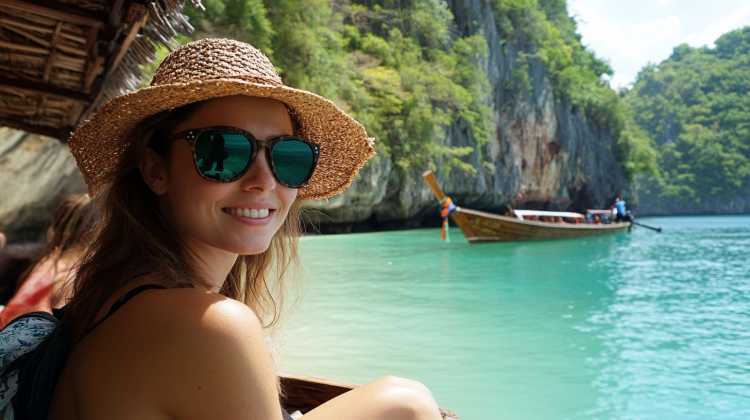

January is an ideal time to explore destinations that come alive during the winter season, offering experiences that cater to every kind of traveler. Whether you’re longing to escape the cold for sun-soaked beaches, embrace the magic of snow-covered mountains, or immerse yourself in cultural treasures, January provides the perfect window to kickstart your travel plans. It’s a month that offers a fresh start, and what better way to begin the year than with an unforgettable journey?
For those seeking warmth, tropical paradises and coastal retreats beckon, offering clear skies and balmy weather to shake off the winter blues. On the other hand, if you’re a snow lover, the crisp air and sparkling landscapes of winter wonderlands create the perfect backdrop for outdoor adventures like skiing, snowboarding, or cozy evenings by a fire. January also holds the charm of quieter cities and towns, where off-season travel allows you to enjoy iconic landmarks, vibrant festivals, and rich cultural experiences without the crowds.
In this guide, we’ll explore five incredible destinations that are at their best in January. Each location offers unique attractions, from awe-inspiring natural beauty to thrilling activities and cultural wonders. Whether you’re dreaming of Patagonia’s wild landscapes, the tropical serenity of Thailand, or the festive charm of Seville, these destinations promise a memorable start to your year. Let these ideas inspire your next adventure!
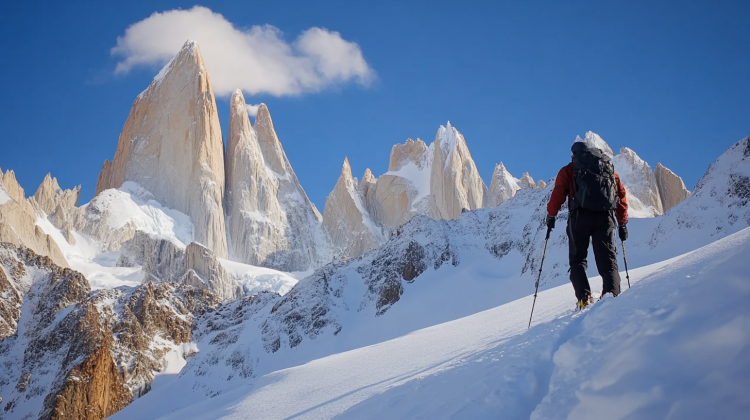

1. Patagonia, Argentina
Why Visit in January: January is summer in Patagonia, offering mild weather, longer daylight hours, and breathtaking landscapes.
Patagonia’s stunning scenery comes alive in January, with opportunities to explore glaciers, rugged mountains, and pristine lakes. Head to Los Glaciares National Park to witness the iconic Perito Moreno Glacier, or hike to the dramatic peaks of Mount Fitz Roy. For wildlife enthusiasts, January is also an excellent time to spot guanacos, condors, and even penguins along the southern coastline. With pleasant weather and fewer crowds than other seasons, Patagonia is a dream destination for nature lovers.
Top Activities in Patagonia During January
- Hiking in Torres del Paine National Park
Torres del Paine in Chilean Patagonia is a must-visit for its iconic jagged peaks, turquoise lakes, and sprawling glaciers. Popular hiking routes include the W Trek, which takes you through some of the park’s most stunning landscapes, and the shorter Mirador Base Las Torres hike to the famous granite towers. January’s mild weather and extended daylight hours make these trails even more enjoyable. - Glacier Exploration
Patagonia is renowned for its glaciers, and January is the perfect time to visit the awe-inspiring Perito Moreno Glacier in Los Glaciares National Park. You can take a boat tour to get up close to the towering ice walls or, for the adventurous, join a guided ice trekking expedition on the glacier itself. - Wildlife Watching
January is ideal for spotting Patagonia’s unique wildlife. Visit Punta Tombo to see Magellanic penguins up close or head to the Valdés Peninsula, where you might catch a glimpse of sea lions, orcas, and elephant seals. The Andean condor, one of the world’s largest flying birds, can often be seen soaring above the region’s rugged mountains. - Scenic Drives and Road Trips
The Carretera Austral (Southern Highway) in Chile offers one of the most picturesque road trips in the world. You’ll encounter breathtaking landscapes, from fjords and waterfalls to glaciers and dense forests. In Argentine Patagonia, the Ruta 40 highway provides similar views, connecting you to charming towns like El Calafate and El Chaltén. - Boating on Lago Argentino
January is an excellent time to take a boat tour on Lago Argentino, Argentina’s largest freshwater lake. You’ll get to see massive icebergs and stunning views of the Upsala and Spegazzini glaciers. The combination of vivid blue water and snow-capped mountains creates a surreal experience.
Tips for Visiting Patagonia in January
- Pack for All Weather: While January offers mild temperatures, Patagonia is known for its unpredictable weather. Bring layers, waterproof gear, and sturdy hiking boots.
- Book in Advance: January is a popular time for tourism in Patagonia, so accommodations, tours, and park permits can sell out quickly.
- Plan for Long Days: With daylight lasting up to 17 hours, you’ll have plenty of time for outdoor activities—just remember to pace yourself!
- Respect the Environment: Patagonia is a pristine natural area, so follow Leave No Trace principles and be mindful of local wildlife and ecosystems.
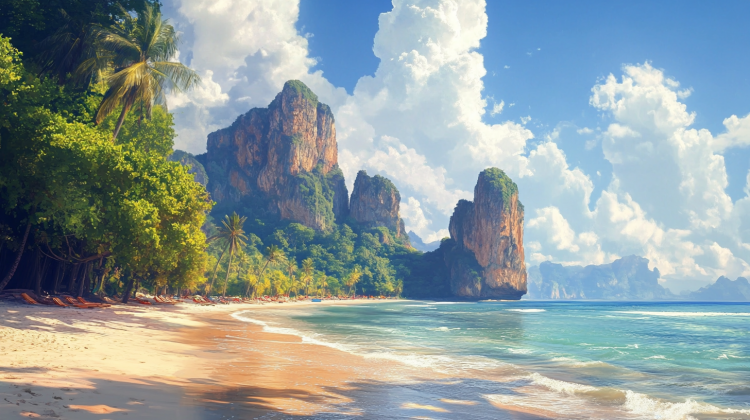

2. Railay Beach, Thailand
Why Visit in January: Warm weather, calm seas, and ideal conditions for beach adventures make January one of the best months to visit.
Tucked away on a peninsula accessible only by boat, Railay Beach offers a slice of tropical paradise. The crystal-clear waters are perfect for swimming, snorkeling, and kayaking, while the surrounding limestone cliffs attract rock climbers from around the world. In January, the dry season ensures sunny days and cool evenings, making it the perfect time to relax on the beach or explore the nearby Phra Nang Cave.
Top Activities at Railay Beach in January
- Rock Climbing on Limestone Cliffs
Railay Beach is world-renowned for its dramatic limestone cliffs, which attract climbers from all over the globe. Whether you’re a beginner or an experienced climber, the area offers routes of varying difficulty levels. Popular spots include the cliffs at Phra Nang Beach and the viewpoints overlooking Railay East and West. - Beach Hopping
Railay is home to several stunning beaches, each with its own charm. Spend your days relaxing on Railay West, known for its golden sands and calm waters, or explore the quieter Tonsai Beach, which is a favorite for backpackers. For an unforgettable experience, visit Phra Nang Beach, famous for its crystal-clear waters and the iconic Phra Nang Cave. - Kayaking and Paddleboarding
The calm, turquoise waters around Railay Beach are perfect for kayaking and paddleboarding. Rent a kayak and paddle through the mangroves, explore hidden lagoons, or simply enjoy the breathtaking views of the surrounding cliffs and islands. - Snorkeling and Island Hopping
Railay Beach serves as an excellent base for snorkeling and island-hopping tours. Explore nearby islands like Chicken Island, Poda Island, and Tup Island, all of which are part of the famous Four Islands Tour. The underwater life, including vibrant coral reefs and tropical fish, is a highlight of the trip. - Sunset Watching
The sunsets at Railay Beach are unforgettable, with the vibrant hues of orange, pink, and purple reflecting off the water. Grab a spot on Railay West, or take a sunset cruise to watch the sun dip below the horizon from the sea. Many local boats also offer bioluminescent plankton tours after sunset for a magical night experience.
Tips for Visiting Railay Beach in January
- Access by Boat Only: Railay Beach is not accessible by road, so you’ll need to take a long-tail boat from nearby Ao Nang or Krabi Town. The journey is short and scenic, adding to the charm of the destination.
- Book Accommodations Early: January is peak travel season in Thailand, so secure your accommodations in advance. Railay offers options ranging from luxury resorts to budget-friendly bungalows.
- Stay Hydrated and Protected: January offers dry, sunny weather, so bring sunscreen, a hat, and plenty of water to stay comfortable.
- Respect Local Culture: Visit Phra Nang Cave, a sacred site for locals, with reverence. It’s adorned with offerings to the spirit of the cave, believed to protect fishermen.
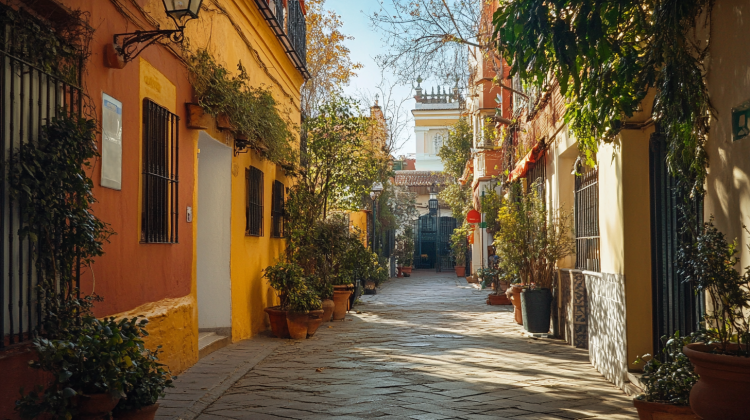

3. Seville, Spain
Why Visit in January: Enjoy the charm of Andalusia with mild weather and fewer crowds.
Seville’s rich history and vibrant culture make it an excellent destination for January travel. The cooler temperatures are ideal for exploring the city’s iconic landmarks, such as the Real Alcázar, Plaza de España, and the awe-inspiring Seville Cathedral. Wander through the charming Barrio Santa Cruz, Seville’s old Jewish quarter, and enjoy traditional tapas in cozy local restaurants. With fewer tourists than in the spring or fall, January allows you to experience the city’s magic at a relaxed pace.
Top Activities in Seville During January
- Explore the Real Alcázar
This breathtaking palace, a UNESCO World Heritage Site, is a must-visit for its stunning architecture and rich history. Built in the Moorish style and later expanded by Spanish monarchs, the Real Alcázar offers intricate tilework, peaceful gardens, and majestic halls. January’s cooler weather makes it an ideal time to wander through the sprawling grounds without the crowds of the peak tourist season. - Wander Through Barrio Santa Cruz
Seville’s historic Jewish Quarter is a maze of narrow streets, charming courtyards, and whitewashed buildings. January is perfect for leisurely exploring this picturesque neighborhood, as the mild weather allows you to enjoy its outdoor cafes and hidden squares. Don’t miss Plaza de Doña Elvira, a romantic spot with orange trees and tiled benches. - Visit Seville Cathedral and La Giralda
Seville Cathedral, one of the largest Gothic cathedrals in the world, is an architectural masterpiece that houses Christopher Columbus’s tomb. Adjacent to the cathedral is La Giralda, a bell tower offering panoramic views of the city. The fewer crowds in January mean you can enjoy these landmarks at a relaxed pace, taking in the intricate details and history. - Indulge in Tapas Culture
Seville is famous for its vibrant tapas scene, and January’s cooler evenings are perfect for hopping between cozy bars. Enjoy local specialties like Iberian ham, salmorejo (a chilled tomato soup), and grilled seafood. Popular spots include El Rinconcillo, one of Seville’s oldest tapas bars, and La Azotea, known for its modern take on traditional dishes. - Catch a Flamenco Performance
Seville is the heart of flamenco, and no trip is complete without experiencing this passionate art form. Head to a local tablao (flamenco venue) like Casa de la Memoria or El Arenal to watch talented dancers and musicians perform in an intimate setting.
Tips for Visiting Seville in January
- Pack Layers: While January offers mild daytime temperatures, evenings can be chilly, so bring a jacket or sweater for comfort.
- Enjoy Off-Season Prices: January is considered low season in Seville, meaning you’ll find more affordable accommodations and fewer tourists at popular attractions.
- Experience the Festive Atmosphere: If you visit early in January, you can enjoy the final days of the Christmas lights and decorations, as well as the traditional Three Kings Parade (Cabalgata de Reyes) on January 5th, a beloved local event.
- Take Your Time: With fewer crowds, January is the perfect month to savor Seville’s cultural treasures at your own pace.
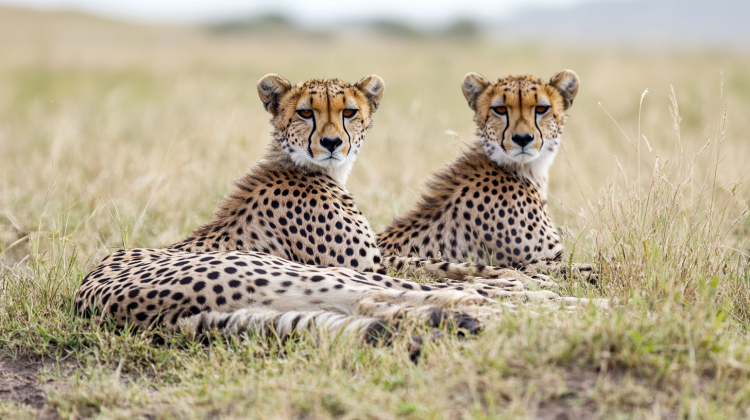

4. Serengeti National Park, Tanzania
Why Visit in January: Witness the Great Migration and the calving season in the Serengeti.
January is a prime time for wildlife enthusiasts to visit Tanzania’s Serengeti National Park. During this month, wildebeests gather in large numbers to give birth, providing a unique opportunity to witness the calving season and predator activity. Beyond the migration, the Serengeti’s vast plains offer incredible game drives where you can spot lions, elephants, cheetahs, and giraffes in their natural habitat. The dry weather and lush landscapes make this one of the best safari experiences in the world.
Top Activities in Serengeti National Park During January
- Witness the Great Migration and Calving Season
January marks the calving season in the Serengeti, when vast herds of wildebeests give birth to thousands of calves. This natural spectacle is a once-in-a-lifetime experience, as newborns take their first steps and predators like lions, cheetahs, and hyenas closely follow the herds. The southern Serengeti, particularly the Ndutu region, is the best place to witness this incredible event. - Game Drives and Safari Adventures
With lush green landscapes following the short rainy season, January offers excellent visibility for wildlife spotting. Embark on a guided game drive to see elephants, giraffes, zebras, and other iconic African animals roaming the plains. Morning and evening drives are especially rewarding, as animals are most active during cooler parts of the day. - Birdwatching Paradise
January is a prime time for birdwatching in the Serengeti, as migratory birds flock to the area during this season. The park becomes home to over 500 bird species, including flamingos, ostriches, and crowned cranes. Bring binoculars to fully appreciate the vibrant colors and fascinating behaviors of these winged visitors. - Cultural Visits to the Maasai Communities
Enhance your trip by visiting a local Maasai village, where you can learn about the traditional lifestyle, customs, and art of this iconic East African tribe. This cultural experience adds depth to your safari, offering a chance to connect with the people who share the land with the incredible wildlife.
Tips for Visiting Serengeti National Park in January
- Plan for Green Season Travel: January falls in the Serengeti’s green season, characterized by lush vegetation and occasional short rains. While rain is brief and typically occurs in the afternoons, it adds to the scenic beauty and attracts wildlife.
- Book Accommodations Early: The calving season is a popular time for safaris, so secure your spot at lodges or tented camps well in advance. Options range from luxury lodges to eco-friendly mobile camps.
- Pack Smart for Safari: Bring lightweight, breathable clothing in neutral colors to blend in with the environment. Don’t forget essentials like a wide-brimmed hat, sunscreen, and insect repellent.
- Maximize Your Safari Experience: Opt for a knowledgeable local guide who can provide insights into animal behaviors and help you spot wildlife you might otherwise miss.
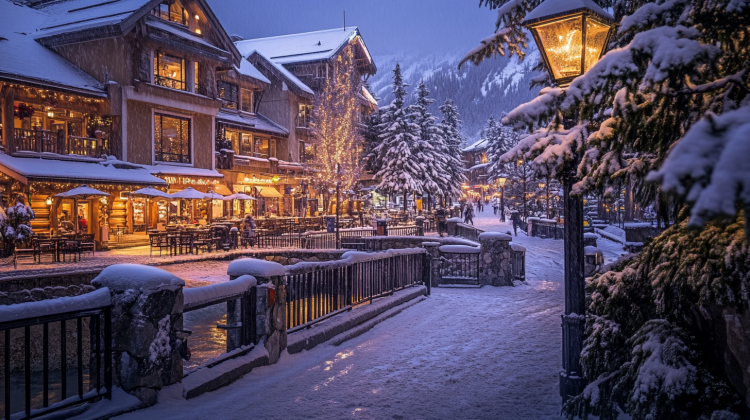

5. Whistler, Canada
Why Visit in January: Perfect for skiing and snow-filled adventures.
For those who dream of a winter wonderland, Whistler delivers with its world-class ski slopes and breathtaking mountain scenery. January offers some of the best snowfall of the season, providing excellent conditions for skiing, snowboarding, and snowshoeing. When you’re ready to unwind, Whistler’s après-ski culture shines with cozy pubs, gourmet dining, and luxurious spas. Non-skiers can enjoy activities like snowmobiling, ice skating, or simply soaking in the beauty of the snow-covered landscape.
Top Activities in Whistler During January
- World-Class Skiing and Snowboarding
Whistler is home to one of the largest ski resorts in North America, offering over 8,000 acres of skiable terrain. January is peak ski season, with excellent snow conditions and a wide variety of runs for all skill levels. Whether you’re a beginner or an expert, Whistler Blackcomb’s slopes cater to everyone, with stunning mountain views as a bonus. - Snowshoeing and Winter Hiking
For a more serene way to explore Whistler’s winter wonderland, snowshoeing is an excellent choice. Trails like Lost Lake Park offer peaceful paths through snow-covered forests. Winter hiking tours are also available, allowing you to immerse yourself in the region’s breathtaking natural beauty at a slower pace. - Indulge in Après-Ski Culture
After a day on the slopes, Whistler’s vibrant après-ski scene comes to life. Enjoy craft beer at a cozy pub, sip cocktails by a roaring fire, or sample gourmet dining at top restaurants like Araxi or the Bearfoot Bistro. Whistler Village’s lively atmosphere ensures there’s something for everyone to enjoy after the sun sets. - Adventure Activities Beyond Skiing
If you’re looking for more thrills, Whistler offers plenty of non-skiing activities. Take a snowmobile tour through the backcountry, zipline above snowy treetops, or ride the Peak 2 Peak Gondola, which offers panoramic views of the surrounding mountains. Ice skating at the Olympic Plaza is another family-friendly option. - Relax at Scandinave Spa
Unwind after your outdoor adventures with a visit to the renowned Scandinave Spa. Nestled in the forest, this spa offers hot and cold pools, saunas, and steam rooms for a rejuvenating experience amidst the snowy landscape.
Tips for Visiting Whistler in January
- Book Accommodations Early: January is a popular time for winter sports enthusiasts, so reserve your lodging well in advance. Whistler Village offers a range of accommodations, from luxurious ski-in/ski-out resorts to budget-friendly hotels.
- Dress for the Cold: Whistler’s January temperatures range from 20°F to 32°F (-6°C to 0°C). Pack warm, waterproof clothing, insulated gloves, and layers to stay comfortable during outdoor activities.
- Plan for Crowds: As one of the world’s top winter destinations, Whistler can be busy in January. To make the most of your trip, hit the slopes early in the day and book dining reservations in advance.
- Travel Smart: If driving from Vancouver, prepare for winter road conditions and consider snow tires or chains. Alternatively, shuttle services are available for a stress-free journey to the resort.
Plan Your January Adventure
Whether you’re chasing the sun, snow, or culture, these five destinations offer unforgettable experiences in January. From Patagonia’s natural wonders to Railay Beach’s tropical serenity, there’s something for every type of traveler. Start your year on a high note by exploring one of these incredible places, creating memories that will last a lifetime.





